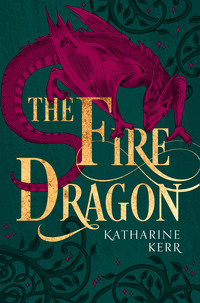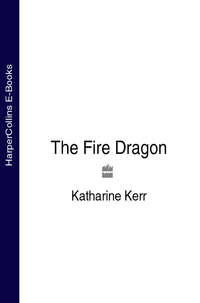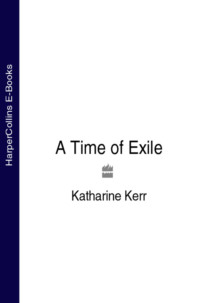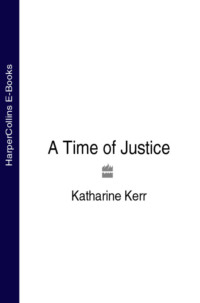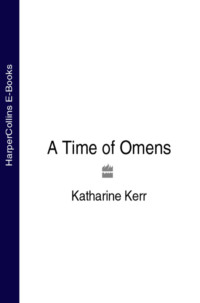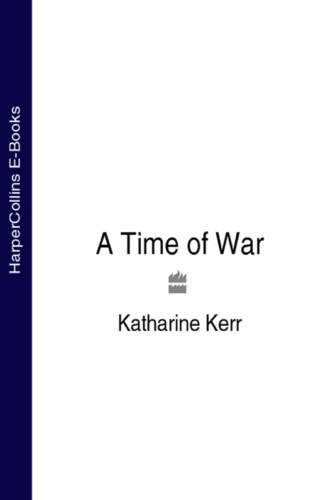
Полная версия
A Time of War

Voyager
KATHARINE KERR
A Time of War
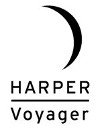
Copyright
Voyager
An Imprint of HarperCollinsPublishers
77–85 Fulham Palace Road,
Hammersmith, London W6 8JB
www.harpercollins.co.uk
First published in Great Britain by
HarperCollinsPublishers 1993
Copyright © Katharine Kerr 1993
Katharine Kerr asserts the moral right to be identified as the author of this work
This novel is entirely a work of fiction. The names, characters and incidents portrayed in it are the work of the author’s imagination. Any resemblance to actual persons, living or dead, events or localities is entirely coincidental.
All rights reserved under International and Pan–American Copyright Conventions. By payment of the required fees, you have been granted the non–exclusive, non–transferable right to access and read the text of this e-book on screen. No part of this text may be reproduced, transmitted, down-loaded, decompiled, reverse engineered, or stored in or introduced into any information storage and retrieval system, in any form or by any means, whether electronic or mechanical, now known or hereinafter invented, without the express written permission of HarperCollins.
HarperCollinsPublishers has made every reasonable effort to ensure that any picture content and written content in this ebook has been included or removed in accordance with the contractual and technological constraints in operation at the time of publication.
Source ISBN: 9780586211977
Ebook Edition © JULY 2014 ISBN: 9780007375370
Version: 2014–08–11
Dedication
For Richard Wilfred Ashton
My grandfather
Contents
Cover
Title Page
Copyright
Dedication
Map
Pronunciation Notes
The Westlands
Part One: Puer
Part Two: Amissio
Part Three: Puella
Part Four: Via
Part Five: Carcer
Part Six: Caput Draconis
Keep Reading
Appendices: Historical Notes
Glossary
Acknowledgments
About the Author
Also by the Author
About the Publisher
Map
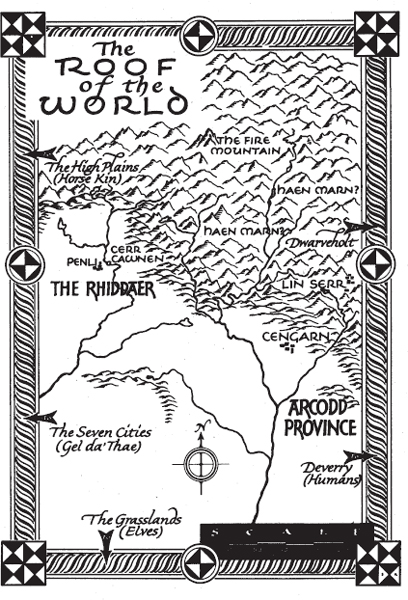
Pronunciation Notes
Vowels are divided by Deverry scribes into two classes: noble and common. Nobles have two pronunciations; commons, one.
A as in father when long; a shorter version of the same sound, as in far, when short.
O as in bone when long; as in pot when short.
W as the oo in spook when long; as in roof when short.
Y as the i in machine when long; as the e in butter when short.
E as in pen.
I as in pin.
U as in pun.
Vowels are generally long in stressed syllables; short in unstressed. Y is the primary exception to this rule. When it appears as the last letter of a word, it is always long whether that syllable is stressed or not.
Diphthongs generally have one consistent pronunciation.
AE as the a in mane.
AI as in aisle.
AU as the ow in how.
EO as a combination of eh and oh.
EW as in Welsh, a combination of eh and oo.
IE as in pier.
OE as the oy in boy.
UI as the North Welsh wy, a combination of oo and ee.
Note that OI is never a diphthong, but is two distinct sounds, as in carnoic, (KAR-noh-ik).
Consonants are mostly the same as in English, with these exceptions:
C is always hard as in cat.
G is always hard as in get.
DD is the voiced th as in thin or breathe, but the voicing is more pronounced than in English. It is opposed to TH, the unvoiced sound as in th or breath. (This is the sound that the Greeks called the Celtic tau.)
R is heavily rolled.
RH is a voiceless R, approximately pronounced as if it were spelled hr in Deverry proper. In Eldidd, the sound is fast becoming indistinguishable from R.
DW, GW, and TW are single sounds, as in Gwendolen or twit.
Y is never a consonant.
I before a vowel at the beginning of a word is consonantal, as it is in the plural ending -ion, pronounced yawn.
Doubled consonants are both sounded clearly, unlike in English. Note, however, that DD is a single letter, not a doubled consonant.
Accent is generally on the penultimate syllable, but compound words and place names are often an exception to this rule.
I have used this system of transcription for the Bardekian and Elvish alphabets as well as the Deverrian, which is, of course, based on the Greek rather than the Roman model. On the whole, it works quite well for the Bardekian, at least. As for Elvish, in a work of this sort it would be ridiculous to resort to the elaborate apparatus by which scholars attempt to transcribe that most subtle and nuanced of tongues.
As those who have been following the earlier works in this series know, a certain Elvish professor of Elvish has chosen to waste his supposedly valuable time by disputing this obvious point. Since the man refuses to see reason and stop his scurrilous attacks upon us, my publishers and I have been forced to sue for redress in the malover of the gwerbrets of Aberwyn, much as it distresses us to waste the clearly valuable time of this court. Although the case has yet to be accepted for deliberation, readers will be kept apprised of future developments, never fear.
THE WESTLANDS
Summer, 1116
RUBEUS
Of all the figures that give us omens in the element of Earth, this be the most dangerous and dissolute, unless it pertain, thanks to the overall reading of the map, to days of blood and fire. And should it fall into the House of Iron, then the loremaster must destroy the map immediately, proceeding no farther, for naught good will come of peering into such a future.
The Omenbook of Gwarn, Loremaster
Конец ознакомительного фрагмента.
Текст предоставлен ООО «ЛитРес».
Прочитайте эту книгу целиком, купив полную легальную версию на ЛитРес.
Безопасно оплатить книгу можно банковской картой Visa, MasterCard, Maestro, со счета мобильного телефона, с платежного терминала, в салоне МТС или Связной, через PayPal, WebMoney, Яндекс.Деньги, QIWI Кошелек, бонусными картами или другим удобным Вам способом.




